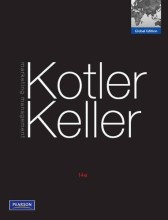Summary: Leereenheid 4 - Interspecifieke Concurrentie En Soortenrijkdom
- This + 400k other summaries
- A unique study and practice tool
- Never study anything twice again
- Get the grades you hope for
- 100% sure, 100% understanding
Read the summary and the most important questions on Leereenheid 4 - Interspecifieke concurrentie en soortenrijkdom
-
6 Interspecific competition
-
6.2.3 Some general observations
-
What are the 4 general points regarding interspecific competition?
- Competing species often coexist at one spatial scale, but have more distinct distributions when you look more closely.
- Species are often excluded by interspecific competition from locations at which they could exist perfectly well in the absence of interspecific competition.
- Fundamental niche vs realized niche.
- Competing species can coexist when both are provided with a realized niche by their habitat, but even in a realized niche a species may be excluded by another species that denies its realized niche here.
-
6.2.7 The competitive exclusion principle
This is a preview. There are 1 more flashcards available for chapter 6.2.7
Show more cards here -
What does the competitive exclusion principle not say?
- That whenever we see coexisting species with different niches it is reasonable to jump to the conclusion that this is the principle in operation.
- Each species has their own niche and this does not prove that there are coexisting competitors.
- That whenever we see coexisting species with different niches it is reasonable to jump to the conclusion that this is the principle in operation.
-
What will coexisting species with the potential to compete do?
They will exhibit differences in behavior, physiology or morphology that ensure that they compete little or not at all. = character displacement. -
10 Patterns in species richness
-
10.1 Introduction
This is a preview. There are 1 more flashcards available for chapter 10.1
Show more cards here -
Why is it difficult to count or list the number of species in a community?
Because of taxonomic inadequacies and because only a portion of the organisms in an area can usually be counted. -
What do diversity indices describe?
They are designed to combine both species richness and the evenness or equitability of the distribution of individuals among those species. -
10.2 A simple model of species richness
This is a preview. There are 1 more flashcards available for chapter 10.2
Show more cards here -
What is the niche breadth (n)?
- The portion of the resource continuum (R) that each species uses.
- Average niche breadth is ñ.
-
Explain why some communities can/should contain more species than others using niche breadth, and overlap.
- For given values of ñ and õ, a community will contain more species the larger the value of R (=greater range of resources).
- For a given R, more species will be accommodated if ñ is smaller (=species are more specialized in their use of resources)
- With a greater õ, more species will coexist along the same R.
- A community will contain more species the more fully saturated it is. It will contain fewer species when more of the R is unexploited.
-
When are resources likely to be fully exploited? On what will species richness then be dependent?
- When a community is dominated by interspecific competition.
- Species richness will then depend on the range of available resources, the extent to which species are specialists and the permitted extent of niche overlap.
- When a community is dominated by interspecific competition.
-
What is the effect of predation on species richness?
- Predators can exclude certain prey species, which might lead some resources to be unexploited (fig d) and species richness may be reduced.
- Predation may keep species under their carrying capacity, reducing the intensity and importance of direct interspecific competition for resources. This permits more niche overlap and greater species richness than in a community dominated by competition (fig. c)
-
10.3.1 Productivity and resource richness
-
What is the relation between productivity of the environment and species richness?
Increased productivity of the environment might be expected to lead to increased species richness.
- Higher grades + faster learning
- Never study anything twice
- 100% sure, 100% understanding































